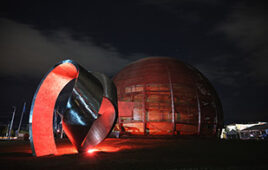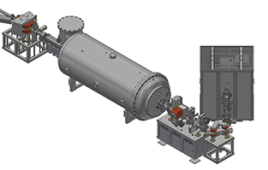.jpg)
A new composite material may enable hydrogen to become the source of cleaner fuel
Hydrogen may be closer to becoming the source of cleaner fuel thanks to a new composite material.
Researchers from the University of California Santa Cruz have developed a nanostructured composite material that has potential as a catalyst for the electrochemical splitting of water to produce hydrogen.
The researchers previously sought the use of carbon-based nanostructured materials as catalysts for the reaction that generates hydrogen from water and found success by incorporating ruthenium ions into a sheet-like nanostructure composed of carbon nitride.
They went on to improve performance of the catalyst by combining the ruthenium-doped carbon nitride with graphene.
“The bonding chemistry of ruthenium with nitrogen in these nanostructured materials plays a key role in the high catalytic performance,” Shaowei Chen, a professor of chemistry and biochemistry at UC Santa Cruz, said in a statement. “We also showed that the stability of the catalyst is very good.”
For hydrogen to be viable as a clean, environmentally friendly fuel, an efficient, low-cost catalyst is necessary. However, hydrogen production currently depends heavily on fossil fuels—mostly using steam to extract it from natural gas.
If researchers find a way to extract hydrogen from water through electrolysis, then electricity from renewable sources including solar and wind power could then be easily stored and distributed as hydrogen fuel.
Currently, the most efficient catalysts for the electrochemical reaction that generates hydrogen from water are based on platinum, which is scarce and expensive. While carbon-based materials have shown promise, they have yet to come close to the performance of platinum-based catalysts.
In the new composite material, the ruthenium ions embedded in the carbon nitride nanosheets change the distribution of electrons in the matrix, creating more active sites for the binding of protons to generate hydrogen. After adding graphene to the structure, the researchers further enhanced the redistribution of electrons.
“The graphene forms a sandwich structure with the carbon nitride nanosheets and results in further redistribution of electrons,” Chen said. “This gives us greater proton reduction efficiencies.”
The researchers found that the electrocatalytic performance of the composite was comparable to commercial platinum catalysts, but still plan to improve the efficient of the hydrogen production, while also lowering costs.
The study was published in ChemSusChem.




